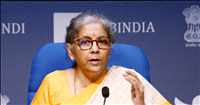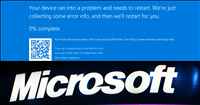Weed out benami applications in telecom licences, says Cellular Operators'' Association of India
12 Sep 2007
The Cellular
Operators'' Association of India (COAI), India''s GSM telecom operators'' association,
is demanding "unmasking" of the corporate entities that have applied
through subsidiaries and associate companies for telecom licences.
In
its letter to the Department of Telecommunications (DoT), COAI implies that some
of the companies that have applied for spectrum could be virtually benami entities
or fronting for companies that are using unfair means to defeat the telecom policy''s
objectives and licence conditions.
The letter says it is mandatory for DoT to lift the corporate veil and ignore the separate corporate personality of each applicant company. About 160 applications have already come in for new unified access service (UAS) licences and many more are expected to be filed this week.
COAI said it is concerned that some of the applicants may be circumventing licence norms by anonymously violating the rules, including cross-holding restrictions.
"We are concerned that these companies, which have no telecom background or are unheard of, are actually proxies for established telcos," COAI director general TV Ramachandran said.
The letter, addressed to telecom secretary D S Mathur, demands that for all licences and applications, the corporate veil has to be lifted to determine the economic entity or promoter group that is the real beneficiary.
The UAS licence norms prevent any single entity - either directly or through its associates - from holding more than a 10-per cent stake in more than one licensee company in a particular service area. No single entity or individual can hold a stake in more than one licensee company for the same service area.
The telecom policy recognises that spectrum is a limited national resource. No single company or a group of associated companies can be permitted to monopolise spectrum in any service area.
There are as many as eight operators in most telecom circles, so what business case does it make for a ninth or tenth operator, who would be a late starter in the market? It is evident that these are not serious players, or are fronts for existing operators, Ramachandran said.
There are reports that DoT has already put new UAS licence applications under the scanner in a bid to establish the real identities of the applicants. A closer scrutiny of the applicants is underway to establish if any crossholding patterns existed. However, this could not be confirmed.
The
move came when it appeared that the shareholding pattern and the promoter details
in some applications were not clear. Applicant companies included names like Bycell,
Swan, Cheetah, S Tel, Datacom Solutions and Alliance Infratech, HFCL, Spice Communications
and Parsvnath. All have applied for UAS licences that permit them to offer 2G
services in the country.
Four
operators were issued licences in December 2006, but are still awaiting allocation
of spectrum.












.jpg)


.jpg)



.jpg)










